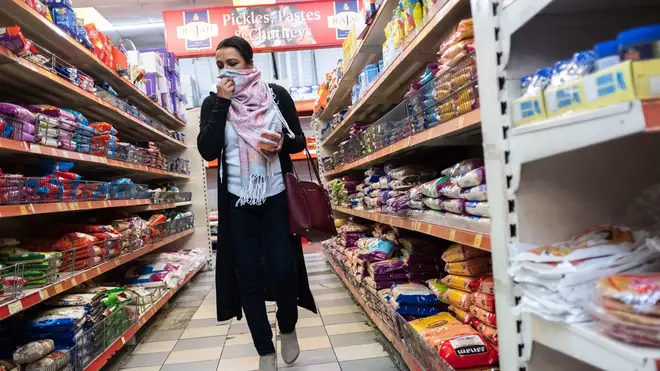
Shelagh Fogarty 1pm - 4pm
5 March 2021, 14:07 | Updated: 5 March 2021, 14:56

The UK's coronavirus R number has risen slightly to between 0.7 and 0.9, despite the country recording its lowest infection numbers since October.
Figures released on Friday by the Scientific Advisory Group for Emergencies (Sage) show the rate has risen from the 0.6-0.9 estimate that had been recorded for the past two weeks.
Britain's previous R number was at its lowest level since July 2020.
The reproduction number is below 1 in all NHS regions of England, although in the North East and Yorkshire it has an upper bound of 1.
R represents the average number of people each person with coronavirus is expected to go on to infect. When it is higher than 1, an outbreak can grow exponentially, but when it is lower, it means the epidemic is shrinking.
The Scientific Pandemic Influenza Group on Modelling (SPI-M) said: "Although the epidemic continues to decrease nationally, there may be more variation in transmission locally, with some indications that the rate of decline in infections could be slowing in some areas."
Read more: Covid infections in England fall to lowest level since October
Read more: TfL commissioner tells LBC: London isn't 'done' because of Covid

Nick Ferrari confronts Health Minister over NHS payrise
An R number between 0.7 and 0.9 means that, on average, every 10 people infected will pass the virus on to between seven and nine other individuals.
Last week, the R rate stayed between 0.6 and 0.9 after falling to that level the week before (19 February).
The latest estimated growth rate means that the number of new infections is shrinking by between 3 per cent to 5 per cent every day.
In some parts of the country - including London, the East and the South East of England, the regions which were first placed in Tier 4 restrictions at the end of last year - the R number has stayed between 0.6 and 0.8.
Meanwhile, the South West has also dropped to between 0.6 and 0.8.
Read more: Italy blocks Astrazeneca jab shipment to Australia amid shortages
Read more: Surge testing in two new areas after South African variant detected

Rishi Sunak addresses people who have lost loved ones to Covid
It comes as the number of people with Covid-19 in homes across England has continued to fall, according to the latest figures from the Office for National Statistics (ONS).
Around one in 220 people in private households in England had Covid-19 between 21 and 27 February.
This is the equivalent of 248,100 people, down from around one in 145, or 373,700 people, for the period of 13 to 19 February.
It is the lowest figure since the week to 1 October when it was one in 240.
And the number of people infected in England is still high when compared to last summer. In the week to 25 August, around one in 2,000 people had coronavirus.